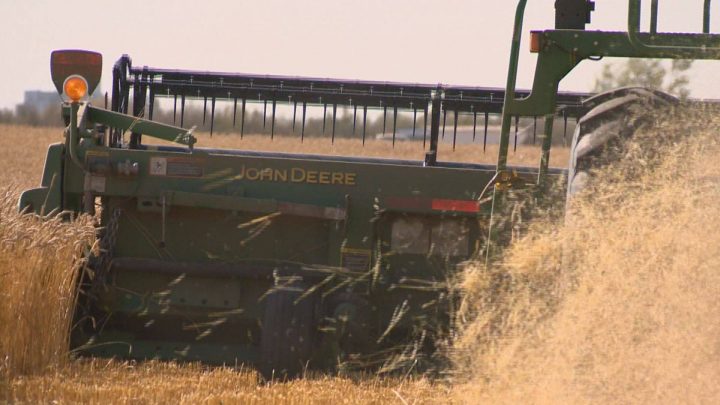Crop quality was average to above-average, and yields were on par with the past 10 years as the final crop report of 2018 was released Thursday.

Saskatchewan Agriculture said harvest is essentially wrapped up, with 99 per cent of crop combined.
The report stated snow and rain delayed harvest of some oat and flax crops, and farmers are still hoping to combine if the weather improves.
Crops combined before the rain and snow in September were grading in the top two grades, with more recently combined crops downgraded due to weather-related factors such as sprouting, bleaching, staining, and frost.

Get breaking National news
Yields vary across the province, based on moisture received during the growing season, and are on par with the 10-year average. Some regions reported higher than expected yields due to timely rain.
Average provincial yields are reported as follows:
- 43 bushels per acre for hard red spring wheat;
- 38 bushels per acre for canola;
- 22 bushels per acre for soybeans;
- 35 bushels per acre for field peas;
- 61 bushels per acre for barley;
- 1,236 pounds per acre for lentils; and
- 1,153 pounds per acre for chickpeas.
The number of acres seeded in the fall was below average in most areas due to drier than normal conditions at seeding time. Rain in September allowed cereal crops to germinate and establish in many regions.
- Officials stress Calgarians must save water after Bearspaw main break sees no drop in usage
- Yukon-Alaska border rocked by 3 earthquakes in final hours of 2025
- Snowmobiler dies in avalanche in Rocky Mountains in northeastern B.C.
- Canadians ring in 2026 with ‘invigorating’ polar plunges across the country
Recent snow and rain has improved field conditions, however, many producers reported significant moisture is needed heading into winter to replenish subsoil moisture, otherwise it will affect growing conditions next year.
Cropland topsoil moisture is rated at five per cent surplus, 64 per cent adequate, 24 per cent short, and seven per cent very short.
Hay land and pasture topsoil moisture conditions are rated two per cent surplus, 52 per cent adequate, 36 per cent short, and 10 per cent very short.
Most livestock producers said they will have adequate supplies of hay, straw, green feed and feed grain heading into winter.
Producers in drier areas reported they will have inadequate winter feed supplies and that shortages are likely if the winter season is extended.






Comments